Mapo Tofu is a popular Chinese dish that is also a major item in Japan.
The minced meat sauce with beet flavored saffron sauce, tender tofu, and spicy flavor stimulate the appetite.
Long green onions are an essential ingredient in Mapo Tofu, aren’t they?
However, have you ever had the experience of being out of green onions when you are about to make it?
Oh no! I don’t have any leeks. What should I do?
In this article, we will introduce you to “substitutes for green onions” that will help you in such a time of need.
Please refer to it when you are in trouble.
Why do you add green onions to Mapo Tofu? What is its role?
In Mapo Tofu, green onions have a role as a condiment, added at the end to add a light aroma.
The slight green smell adds freshness and flavor to the rich bean curd sauce.
The inclusion of green onions adds texture and color and adds depth to the appearance and taste.
The green onions are chopped or sliced diagonally so that they can be easily mixed with the sauce and other ingredients.
The reason for this is that the finer the slices, the better they feel on the tongue, and the more subtle the flavor and aroma.
In terms of nutrition, allicin contained in green onions improves blood circulation and warms the body, while vitamin C and carotene help keep the skin and mucous membranes healthy.
It also contains calcium and leekol, an ingredient that inhibits bacteria and viruses, making it a nutrient-dense vegetable!
What is the key to choosing a substitute for green onions?
When choosing a substitute, choose a “fragrant green onion friend” to get a closer look and flavor.
Those with a fragrance that can be used as a condiment like naganegi go well together, and those with a crispy texture will come closer to the texture of naganegi.
Also, when cooking, the key is not to over-fry.
Even if they don’t exactly fit the criteria, if either the aroma or the texture is right, the whole thing will still taste good!
7 recommended substitutes for green onions in Mapo Tofu
Substitute for green onions in Mapo Tofu 1: Scallion
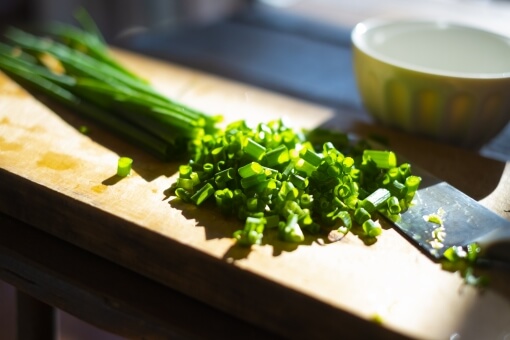
Long green onions are a staple in Mapo Tofu, but the original Mapo Tofu was made with chives.
Spring onions are a hybrid of leeks and onions and are less pungent and easier to eat than leeks and onions.
It grows in bulbs and is characterized by a slightly swollen lower part.
The flavor is soft and gently sweet, so you can add a hint of green onion flavor when you mix it into Mapo Tofu.
If you are not too fond of the spiciness of green onions or for children, I recommend using scallions.
Whereas long green onions were chopped into chunks, the scallions are chopped into chunks to retain their texture and taste better when mixed in.
Add the chopped scallions at the end of the cooking process, add them quickly and lightly to the heat, then combine with the ingredients and you’re done!
Substitute for Green Onions in Mapo Tofu 2: Onions
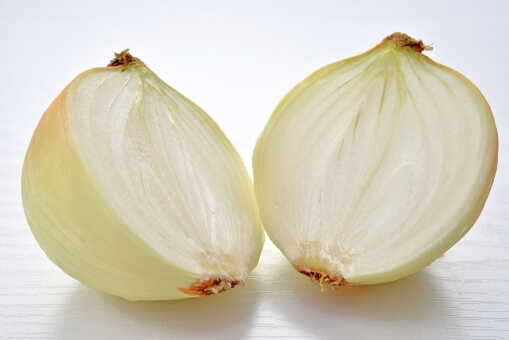
Onions are grown all over the country and have a high shelf life, so they are easy to find in good condition all year round.
When onions are stir-fried or stewed, they become tender and sweet, so they are delicious when added to Mapo Tofu.
In the case of onions, they are very pungent when eaten raw, so stir-frying them is recommended as it is a mellower and brings out a different umami flavor from that of long onions.
However, in the case of fresh onions, the pungency is not as strong, so you can enjoy them even if you just lightly fry them at the end.
Heat the oil in a frying pan and slowly fry the chopped onion, ginger, and garlic until transparent.
After that, add the minced meat and follow the same instructions for making Mapo Tofu as usual.
Sautéing the onions slowly brings out the sweetness of the onions, and when combined with the gravy and seasonings, the flavor becomes richer.
It has a sweeter taste than regular Mapo Tofu, so it is recommended for those who do not like spicy food and children.
If it’s not spicy enough, you can add a sprinkle of Chinese pepper to give it a spicy taste!
Substitute for green onions in Mapo Tofu 3: Kujo green onions
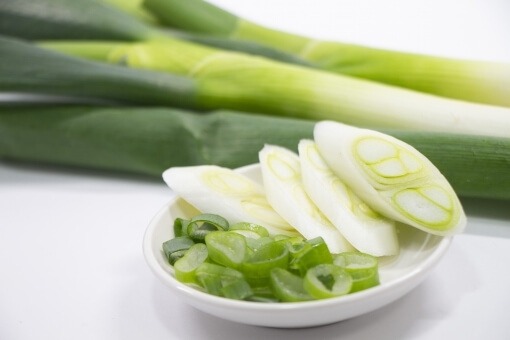
Kujo green onions are grown mainly in Kyoto and are a type of green onion.
It is a type of green onion that is grown mainly in Kyoto. Compared to green onions, green onions have more green leaves and the inside of the leaves is slimier. It is soft to the palate and has a strong natural sweetness.
The white part of the leek and the green leafy part have different nutrients, but both can be used together.
For Kujo green onions, you should add a lot of the wetness inside the green leaves as it has a sweetness and aroma.
The green part is cut diagonally into chunks and the white part is chopped and added at the end of cooking.
The green part is chopped into chunks and added at the end of cooking. Compared to Mapo Tofu with long green onions, the aroma of the green onions is stronger, and the chopped green leaves give it a more gorgeous look.
Substitute for Naganegi in Mapo Tofu 4: Shimonita Negi
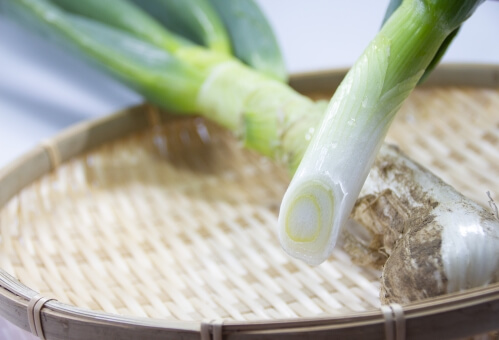
Shimonita green onions are a specialty of the town of Shimonita in Gunma Prefecture and are in season during the summer.
It is noticeably thicker than ordinary leeks, with a diameter of 6 to 9 centimeters.
It is very pungent when eaten raw, but its unique sweetness comes out when it is heated.
It is mainly used as a garnish for sukiyaki and nabe dishes.
The white part becomes more flavorful, tender, and sweet when cooked, but the green leaf part is generally not eaten as much.
When using Shimonita green onions in Mapo Tofu, first fry them in a pan with hot oil at the same time as the ginger, garlic, and minced meat.
When using Shimonita green onions in Mapo Tofu, fry them in a pan with hot oil at the same time as the ginger, garlic, and minced meat.
Substitute for green onions in Mapo Tofu 5: Small onions
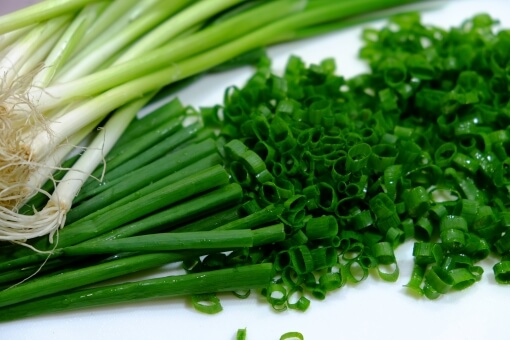
Small green onions are young green onions that are also called thin green onions or all-purpose green onions.
It is usually packed in bags with roots. Onions can be used raw, boiled, or as a condiment.
Because of its characteristic umami taste and aroma, it can be added at the end to enhance the overall flavor of Mapo Tofu, and the moderate spiciness will enhance the taste.
Make mapo tofu as usual and add the scallions at the end.
If you cut it into small pieces, it will be less assertive and blend in well with the flavor.
Substitute for green onions in Mapo Tofu 6: Garlic leaves
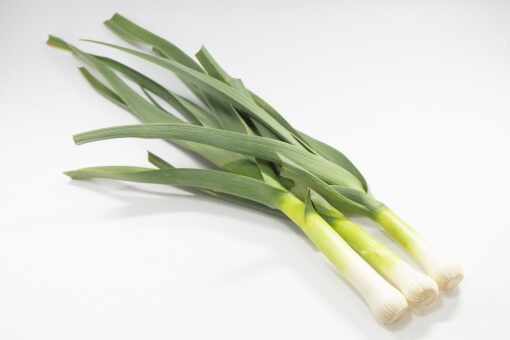
Unlike garlic stems, leaf garlic is a garlic leaf in the process of growing.
It has a mild aroma and a sweet taste.
It is also famous as a stamina vegetable, rich in vitamins and dietary fiber, and highly nutritious.
It is not very popular in Japan, but it is an essential ingredient in Chinese cuisine.
It has a great flavor and goes well with the aroma of sesame oil, making it a perfect match for Mapo Tofu.
It is also delicious when added with other green onions.
Cook the bean-curd soup, as usual, add the garlic leaves cut into 3cm pieces, and finish cooking.
Substitute for Green Onions in Mapo Tofu 7: Chives
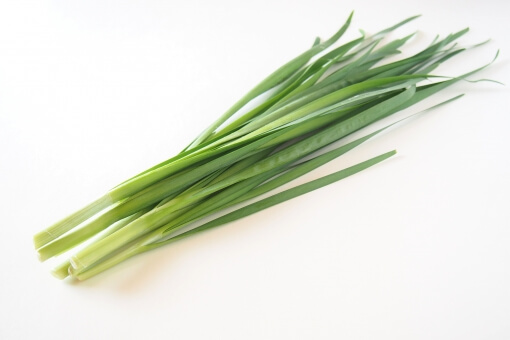
Chives have a unique strong smell and taste and are often used as an accent in cooking.
Like garlic, chives are also a stamina food and contain a wealth of nutrients.
Since it is a perennial herb native to China, it is a perfect match for Chinese cuisine.
Cut it into 3cm pieces or small pieces and add it.
If you want to put it in the bean-curd soup, cook, as usual, add it at the end and quickly through the heat, mix the whole thing is finished!
Summary
- Green onion in Mapo tofu works as a condiment, improves the overall flavor and color, and has a role to accentuate the flavor with a crispy crunch.
- As a substitute for the green onion, you can choose the same green onion vegetable with a good aroma.
- The key is not to overcook them too much to make the most of their aroma, but for onions and Shimonita green onions, which are very pungent, add them overcooked thoroughly.
- The following seven substitutes for spring onions are recommended. 【Bunegi, Onion, Kujo Negi, Shimonita Negi, Small Onion, Leaf Garlic, Chives】.
